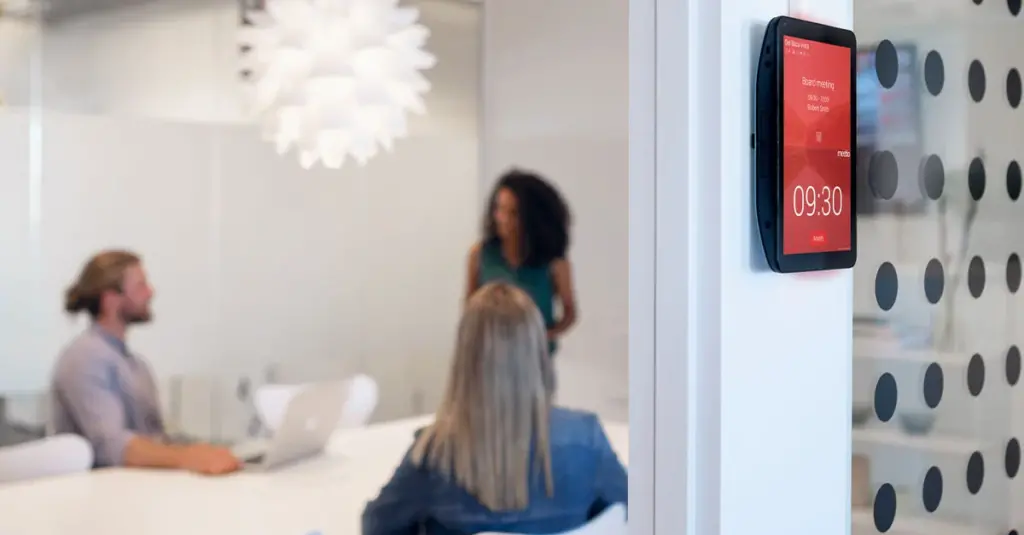Maximizing Co-Working Spaces with Room Booking Systems
- Written by | Editorial Team
It wasn’t that long ago when co-working spaces were all the rage. Then the pandemic happened and this fast-growing segment ground to a halt quickly. With everyone now free to work from home, booking seats and offices in these stylish but communal workspaces became more of a luxury than a need. However, there are positive signs that the industry is roaring back to life.
SWhy? It’s simple: with fewer companies leasing entire offices, renting office space on an ala-carte and as-needed basis becomes a very attractive proposition. And that’s perfectly understandable, as companies look for ways to decrease overhead costs, after two years of pandemic-related losses.
That’s why despite the sector’s hiccups, experts are bullish about its future. Research And Markets, a research firm, even predicts that the industry will grow by over $13 billion between 2021 to 2025, representing a compounded annual growth rate of 11%.
It helps traffic meeting room reservations
Co-working offices — even modestly sized ones — usually consist of a hodgepodge of various sized companies and eclectic freelance tenants. As you would expect, each one of them will need to schedule a meeting or reserve a venue at some point. Given the sheer number of companies these spaces cater to, keeping track of who needs a meeting room and for how long can be quite challenging indeed. Luckily, a meeting room manager makes quick work of this dilemma. Keeping tabs on which rooms are free (or not) is easy for both office managers and users. A tablet in front of the room can announce its status, while a TV screen in the lobby does the same job. Of all the things you need to worry about on any given day, managing meeting room reservations shouldn’t be one of those concerns.

Real-time data sharing
American workers attend a lot of meetings — eleven million of them each day, to be more precise. If you’re a receptionist in a large company who has to take meeting room reservations manually, you’ve truly got your job cut out for you. Unfortunately, the deluge of requests might mean that you can’t update venue statuses in real-time — a problem that could lead to double-booking. However, when a centralized meeting room management system is used, all reservations are recorded instantaneously in a central database. This means that everyone — whether they’re using a PC, tablet, or smartphone — will see which venues are available in real-time and which are not. By removing potential human errors through transparent information sharing, double-booked room conflicts will be a thing of the past.
Flexibility
In an era where literally everyone owns a smartphone, you may be thinking that people will easily warm up to a digital meeting room booker. The truth of the matter, however, is that there will always be workers who may find such solutions intimidating. Fortunately, the best technology options can easily integrate with legacy systems, making the transition and implementation less painful. For example, if a person prefers using Outlook to send meeting invitations, they can use that platform to book the meeting room venue as well. This level of flexibility greatly enhances user adoption and system usage.
Wayfinding
Bigger companies often have sprawling workplaces, sometimes even spanning multiple floors in the same building. Since there are meeting rooms scattered throughout the premises, finding the right one can be a little challenging. This is especially true for new hires or visitors to your company. The solution? Pick a meeting room management system that shows where the meeting venue is actually physically located through a visual map of the office.
Users can access this map through their smartphone app, or they can refer to a large TV display in the lobby that shows their booked room. Having a robust wayfinding feature ensures that meetings always start on time, in the right place, and with the right people.
Automated communication
There’s nothing worse than inviting a colleague to a meeting only to have them not show up. In many cases, this is because they weren’t looped in properly about the meeting or venue. The good news is that a meeting room manager will automatically notify a person if they’ve been added as an attendee. This can be done in a variety of ways, such as through email or through an in-app notification (if they have the room booking app on their phone). By making sure that people are aware that their attendance is needed, they are less likely to not miss crucial meetings.
Without a doubt, as businesses transition to a distributed workforce, co-working spaces will become a solid fixture of the new normal. With the help of room booking systems like Meetio, your co-working locations can modernize their approach to booking meetings!
Want to see how it can help your organization? Feel free to reach out to our team for a no-obligation and risk-free demonstration.



